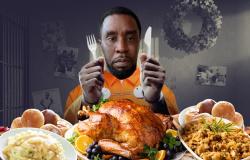Editor’s note: You can find The Economist’s analysis of the election results, as they come in on November 5th and 6th, on our app and home page. We will also publish a full run-down of live results on the night: follow them here soon after the first polls close at 6pm EST / 11pm GMT.
IN THE FINAL update of The Economist’s statistical forecast of America’s presidential election, Kamala Harris’s chances of winning rose from 50% to 56%. Her newfound lead is small enough that it can barely be called a lead at all, and it would be no surprise if Donald Trump wins by a decisive margin. But Ms Harris is widely seen to have had a stronger week to end the campaign than Mr Trump did, and the last batch of polls to enter our model bears that out.
Of the 67 surveys released yesterday, 44 gave Ms Harris better numbers than our forecast previously expected. The data looked particularly rosy for her in the Rust Belt. She led by an average of one percentage point in six polls of Pennsylvania, the most likely decisive state, and by the same amount in five surveys of Wisconsin. In Michigan, her strongest swing state, five polls put her up by two points on average.
On the surface, surveys of the Sun Belt swing states looked less impressive for the vice-president, showing her trailing by one to two points on average in Arizona, Georgia, Nevada and North Carolina. However, these results were better for Ms Harris than were earlier polls of these states by the same firms. In particular, AtlasIntel, whose surveys have tended to inflate Mr Trump’s margins by 2.4 percentage points, published 13 polls yesterday with results that were much closer to the consensus than its norm.
After accounting for such “house effects”, Arizona, Georgia and North Carolina (but not Nevada) showed the same pattern as the northern swing states: Ms Harris’s margins in these final polls exceeded our model’s prior estimates by about one percentage point in all six. If these surveys had entered our forecast a month ago, her win probability would have risen only modestly. But because there is no time left before the election, our model reacts sharply to new data, lest it miss “late movement” like Mr Trump’s surge in November 2016.
The other factor that pushed our forecast towards Ms Harris today was a striking poll published by students and faculty at Dartmouth College. It gave the Democratic nominee a whopping 28-percentage-point lead in New Hampshire, dwarfing the five-point margin that our model previously expected in the state. An earlier survey by the same team found a 21-point lead for Ms Harris, and our forecast’s house-effects adjustment counteracts some of this apparent bias, shifting the results by nine points towards Mr Trump. Even a hefty nine points, however, may not be sufficient to compensate for such an implausibly pro-Democrat sample.
New Hampshire has almost no chance to decide the election. However, our forecast pools information across states, meaning that the Dartmouth survey also improves our predictions for Ms Harris by a tiny amount in swing states. Models like ours can try to account for dubious polls, but they are ultimately only as good as the data they ingest.■





